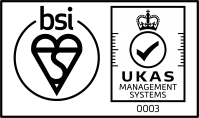Our IPC qualified engineers use the latest CAD software to design circuit boards that are optimised to be manufactured. The PCB design process combines component placement, tracking, material selection and thermal management to achieve electrical connectivity on a manufactured circuit board.
As tempting as it may be to just throw LEDs and other components on to the board, it is the process of clever component placement that keeps costs down, manufacturing easy (or as simple as possible) and quality high. We always design for optimal: manufacturability, thermal and optical performance - and good placement is the foundation of this. The arrangement of parts can impact reliability, assembly processes, solder joint integrity and testing. Many aspects of LED PCB design are unique to LEDs and generally unknown to the wider electronics industry. LED PCBs need to be designed to constrain LED movement during reflow soldering and track flood-fill needs to be optimised for thermal performance and capacitive coupling for example.
In addition to LEDs, we’re placing connectors, active and passive components, thermistors and more onto LED PCBs whilst considering mounting holes, through vias and optic placement. With so many considerations it’s no wonder PCB design is like solving a puzzle.
We haven’t even mentioned PCB physical size constraints and creepage and clearance tolerances that impact on placement, electrical test requirements (accessibility) and assembly limitations. Suitable clearance between components is required to avoid an over-voltage event on the board. Creepage is the shortest distance between components measured along the surface of the insulation material – clearance, on the other hand, is the distance between components measured through air. The more components there are to place the more difficult it can be to achieve creepage and clearance. Our team consider the material of the PCB, insulation and pollution that could occur when the PCB is in the application, they then apply the relevant tolerances for creepage and clearance for long-lasting performance.
Fig.1 – Creepage and clearance measurement
The PCB serves a number of purposes in LED-based circuit designs; most notably it provides the electrical connections between individual components and the electrical insulation of conductors from one another, but often the PCB also forms one of the very first elements of the thermal pathway between the LED component and the ambient air, whilst the PCB can also form a foundation onto which non-electronic components are also mounted I.e. lens and reflectors.
There are various PCB materials that can be used for LED applications: both FR4 and insulated metal substrate (IMS) are popular choices. Each material has its own relative merits, ranging from cost through to thermal performance.
IMS as a PCB material is comprised of three main elements; a metal base layer, a dielectric film, and a copper top-layer. The metal base layer forms the bulk of the PCB thickness and gives mechanical structure and thermal mass, typically the metal used will be aluminium as it offers good thermal performance versus cost. Not all IMS PCBs are the same, high-performance IMS materials have dielectrics with higher thermal conductivity, which ultimately can yield to a product with significantly longer lifetime.
In summary, IMS PCBs are inherently very good at dissipating heat because they are made almost entirely of metal; however, they are typically more costly than FR4 material
FR4 is what most people think of when you say, ‘PCB material’. It is used widely in all manner of electronics and so it is a very familiar material for designers of circuits. FR4 material is constructed from reinforced resin onto which a copper foil has been mounted. As the resin material is an insulator it is possible to create a laminate of many circuit layers placed one on top of another, interconnected as required. Given the thermal performance of IMS surely FR4 is inferior? Not necessarily. With clever PCB design, it is possible to achieve good thermal conductivity through FR4 materials, essentially creating thermal pathways through the resin that do not impact the electrical functionality of the PCB.
Fig.2 – PCB composition of FR4 and IMS
Materials are selected to provide structural strength to support the electronic components and to dissipate the heat from the conductors and the components. Excessive heat is the enemy of the PCB and must be managed for reliability and proper function. Our designers look to maximise heat dissipation with the use of thermal vias, smart component placement and PCB material choice.
Fig.3 – Cross-section of thermal via in FR4 substrate
Heat exchange is not efficient with just the ambient air around a hot device. However, heat can be transferred away from the critical electrical components with the use of thermal vias. Heat is transferred to a thermal via by conduction and this allows heat to move away from the components.
Adding vias will improve the thermal resistance of an FR4 board, provided they are placed appropriately, and the board thickness has been considered to determine the hole diameter. Thicker boards with very small holes are more difficult to manufacture – and more expensive. An acceptable aspect ratio is ≤6:1. Increasing the plating thickness during PCB production improves thermal resistance.
Component placement for even heat distribution, LED heatsinks and the application of the final LED PCB are all considerations throughout the PCB design to ensure effective thermal management and reliability.
Once the components are placed the tracking can begin. The task of tracking is to create geometries such that all terminals assigned to the same net are efficiently connected, no terminals assigned to different nets are connected, and all design rules are obeyed. Through careful tracking, we’re looking to avoid opens, crosstalk and shorts whilst ensuring good quality manufacturing and reliability. At this stage, our designers are thinking track width, symmetry, space and mounting holes.
An adequate track width ensures the desired amount of current is transported throughout the board without overheating. The estimated current and copper thickness along with ambient temperature, track length and track spacing determines the optimum track width.
Not all tracks will be created to equal widths. Power and ground tracks will have much more current flowing through them, making these much wider than the average tracks means there won’t be excess heat flowing through thinner tracks and damaging the board.
As we’ve already mentioned – our circuit boards are optimised for manufacturing. This is why our designers leave enough room between all tracks and pads and radius corners. If using 90 degree angles with tracks there is a higher probability the etched track being narrower than the required track width. Incorporating chamfered or a radius corner avoids this possibility.
A multi-layer PCB is a PCB that has more than 2 layers, they are ideal when space is tight – rather than increasing physical dimensions alternating layers of copper with insulating material can be added between to save on space, improve assembly and increase the area available for tracking.
There are two essential functions of protective coatings/surface finishes applied to the PCB – protect the exposed copper and provide a solderable surface for assembly. After the finish, there is also legend which allows for required markings that can assist with manufacturing and field installation. This also allows us to incorporate your logo into the PCBA for great brand awareness. The most commonly used surface finishes are:
HASL (Hot Air Solder Levelling), OSP (Organic Solderability Preservative), immersion tin, electrolytic nickel/electroplated gold, immersion/silver, ENIG, ENEPIG. Each surface finish has pros and cons and our designers will specify the most suitable finish prior to manufacturing. In most cases, OSP is used as it gives a flat surface required for fine pitch components and the application process is simple.
Smart PCB design is fundamental to manufacturing your ideal LED solution. With clever design, we’re able to incorporate double-sided FR4 PCBs, and multilayer PCBs for optimum performance when space is tight. At the heart of all our PCB designs are your requirements and application. For more information on our expertise or to get your hands on your very own LED solution designed and manufactured by us contact us today.


